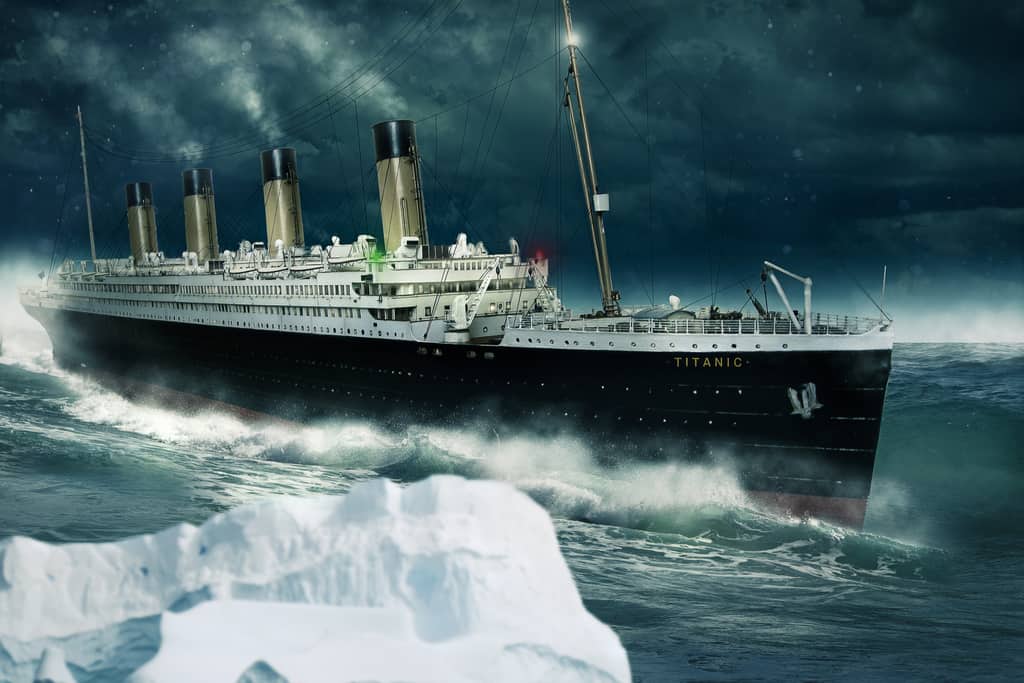Each year on April 15 is National Titanic Remembrance Day, dedicated to the memory of the 1,500 lives lost when the ship sank into the icy waters of the North Atlantic in 1912. Dumfries and Galloway has many connections to the Titanic disaster.
More than 100 years on, the Titanic holds a particular fascination for children. But what is the truth about the ship and the disaster that befell her? Former primary school teacher Becky Cranham of education resources experts Plan Bee separates fact from fiction
The largest moving object in the world
The three-year construction of the Titanic began on 31st March 1909 at the Harland & Wolff shipyards in Belfast. At the time, the Titanic was the largest moving object in the world. She was 269 metres long – nearly the length of three football pitches! At her widest point, she measured 28 metres. And she stood at 53 metres in height from the top of the bridge to the keel.

The maiden voyage
She set out from Southampton in England on April 11, 1912; her intended destination was New York, with 2,224 people on board. The passengers were divided into three groups:
- First class: the wealthiest on board. These included prominent businessmen, entrepreneurs, members of the aristocracy and many other rich, important people.
- Second class: middle-class passengers who were not poor but did not have the social standing of the first-class passengers. They included businessmen, clergymen, tourists and middle-class families.
- Third-class: the poorest, who consisted mainly of people emigrating to America.
A floating hotel
The Titanic was designed like a high-class hotel. It was luxurious and extravagant. For those with a first-class ticket, there was a gymnasium, Turkish baths, a swimming pool, a barber and a squash court, as well as cafés, restaurants and lounges.
The ‘unsinkable’ and the unthinkable
The Titanic was advertised as being ‘unsinkable’. But on 14 April 1912, four days into her maiden voyage, she struck an iceberg in the North Sea. Less than three hours later, the ship lay at the bottom of the ocean.
Who was to blame?
Inquiries found that no single factor or individual was to blame for the disaster but a number of shortcomings were identified.
- Cheap rivets used in the building of the ship.
- Captain Smith failed to slow the ship despite iceberg warnings.
- The telegraph operators ignored messages from a nearby ship that had stopped 20 miles away because it was surrounded by ice.
- There weren’t enough lifeboats for everyone. The original plan was to have 46 lifeboats, but this was reduced to 20 to make more room on the top deck for first-class passengers.
- Even the 20 lifeboats were not filled to capacity. Many were sent to the water half empty. Around 500 more people could have been saved if each lifeboat had been full.
- Only two lifeboats out of the 20 went back to rescue people in the water after the ship had sunk. Those on board were worried they
20 fascinating Titanic facts
- The Titanic still sits on the sea bed, 3,780 metres below the surface.
- The wreckage wasn’t discovered until 1985, 70 years after she sunk.
- It took 3,000 workers to build the Titanic; there were 246 injuries and two people lost their lives.
- Only three out of four smoke stacks (chimneys) actually worked. The other was just to make the ship look more impressive.
- The interior of the ship was inspired by the interior of the Ritz hotel in London.
- 600 tonnes of coal were needed every day to power the Titanic.
- Almost 100 tonnes of ash from the burning coal were ejected into the sea every 24 hours.
- More than 100,000 people went to see the launch of the Titanic at Southampton.
- Of 885 crew, only 23 were women.
- The musicians employed to play music for the first-class passengers had to learn 352 songs by heart so they didn’t need to have sheet music with them.
- It is believed that 13 honeymooning couples were aboard.
- The last Titanic survivor died in 2009, aged 97. She was only two months old on the maiden voyage.
- A silent movie about the Titanic was released soon after the disaster starring Dorothy Gibson, a Titanic survivor.
- There have been numerous films and TV shows about the ship, including the 1997 film, Titanic, that became the highest-grossing film of all time. It starred Leonardo DiCaprio and Kate Winslet.
- There were only 37 seconds between the iceberg being spotted and the collision.
- It took the Titanic just 160 minutes to sink.
- The temperature of the water was -20C.
- Around 6,000 artefacts have been recovered from the wreck.
- When the Titanic launched, there were 20,000 bottles of beer on board, 1,500 bottles of wine and 8,000 cigars, all of which were for the use of first-class passengers.
- There were nine dogs on board the Titanic; only two survived.





